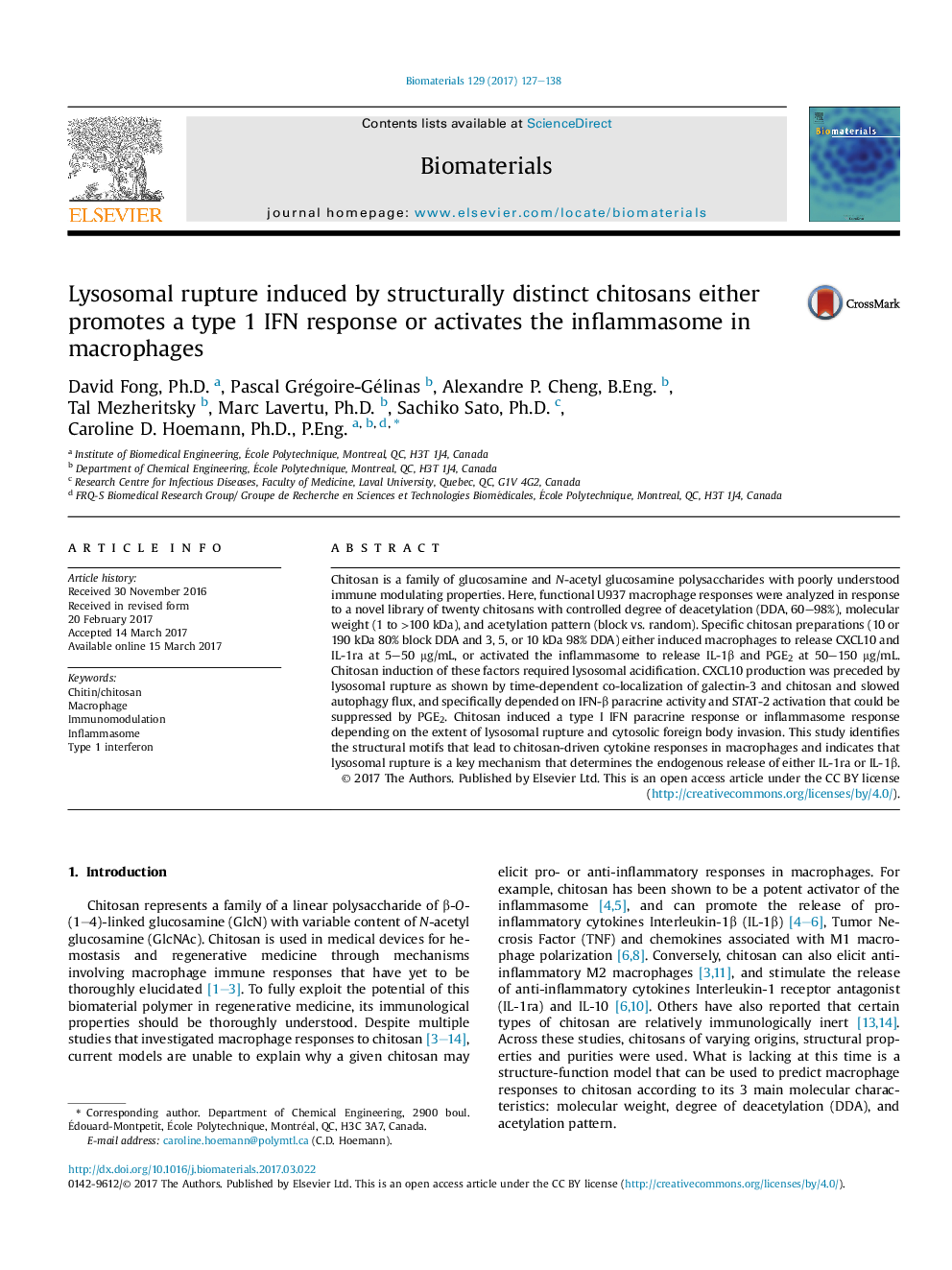| Article ID | Journal | Published Year | Pages | File Type |
|---|---|---|---|---|
| 6450739 | Biomaterials | 2017 | 12 Pages |
â¢A novel library of chitosans with distinct structural properties was generated.â¢Only chitosans containing â¥3 kDa block glucosamine induced macrophage cytokines.â¢Low chitosan doses induced type 1 interferon and IL-1ra and CXCL10 production.â¢High chitosan doses activated the inflammasome and IL-1β and PGE2 production.â¢Chitosan-mediated cytokine responses depended on lysosomal rupture.
Chitosan is a family of glucosamine and N-acetyl glucosamine polysaccharides with poorly understood immune modulating properties. Here, functional U937 macrophage responses were analyzed in response to a novel library of twenty chitosans with controlled degree of deacetylation (DDA, 60-98%), molecular weight (1 to >100 kDa), and acetylation pattern (block vs. random). Specific chitosan preparations (10 or 190 kDa 80% block DDA and 3, 5, or 10 kDa 98% DDA) either induced macrophages to release CXCL10 and IL-1ra at 5-50 μg/mL, or activated the inflammasome to release IL-1β and PGE2 at 50-150 μg/mL. Chitosan induction of these factors required lysosomal acidification. CXCL10 production was preceded by lysosomal rupture as shown by time-dependent co-localization of galectin-3 and chitosan and slowed autophagy flux, and specifically depended on IFN-β paracrine activity and STAT-2 activation that could be suppressed by PGE2. Chitosan induced a type I IFN paracrine response or inflammasome response depending on the extent of lysosomal rupture and cytosolic foreign body invasion. This study identifies the structural motifs that lead to chitosan-driven cytokine responses in macrophages and indicates that lysosomal rupture is a key mechanism that determines the endogenous release of either IL-1ra or IL-1β.
Graphical abstractDownload high-res image (207KB)Download full-size image
